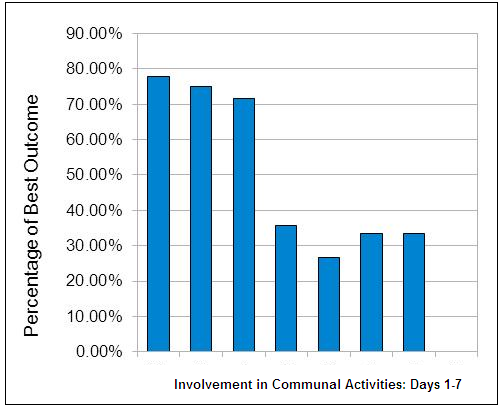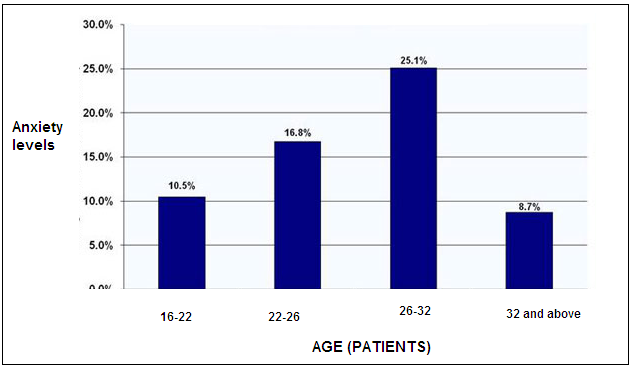Introduction
Since autism spectrum disorder (ASD) is a developmental condition that affects people’s social, behavioral, cognitive, and communication abilities, different agencies such as First Home Care have been keen to offer adequate care to persons with the condition. Patients who lack adequate support find it hard to interact or socialize with others. The use of appropriate programs and interventions can deliver positive results and make it easier for more patients to achieve their aims in life.
This paper gives a detailed analysis of the methods used to complete this research study. The gathered information is analyzed in order to present significant inferences, conclusions, and recommendations. This means that the study offers meaningful insights that can be taken into consideration to maximize the quality and nature of support available to ASD patients.
Methods
One of the interventions associated with the targeted institution is known as direct sensory exposure (DSE). According to Brun (2014), this behavioral approach is embraced by psychologists to develop the best environment for learning and development of appropriate competencies. The technique is usually capable of influencing the way persons with ASD use their senses and interact with community members. It was appropriate to focus on the use of the DSE intervention and examine if addressed most of the challenges facing many ASD patients. Observations were used to collect adequate evidence. This means that the method was valid and reliable for the intended study.
The approach also addressed the issue of cultural competence since it could be applied in at-risk and diverse populations. The independent variable (age) was measured by the investigator. Dependent variables such as anxiety levels and involvement in activities were measured through continuous observation. Percentages and graphs were used for scoring purposes to reveal the effectiveness of existing programs. The obtained results would be used to inform evidence-based ideas and initiatives for empowering patients with ASD.
During the study, the client system demographics focused on individuals from different racial backgrounds. Target behavior was selected by identifying potential candidates randomly from First Home Care. The best program evaluation was designed and matched with every client’s needs. The ethical issue addressed revolved around the use of the gathered information (Brun, 2014). Subjects were informed that the information would be used to propose new policies. Confidential data was also safeguarded. This means that personal data will not be accessible to unauthorized individuals. An inclusion criterion was used for this study. These aspects explain why the research was undertaken and completed successfully.
Data Analysis
An observational research design was used. This means that several ASD patients were identified and monitored for a specified period. Permission was granted by different institutional and community leaders. This model is supported by Brun (2014) because it minimizes chances of conflicts and delivers quality findings. Due to the nature of this study, there were no threats to internal validity. Information was analyzed through the use of graphical representations. This was the case because a simple method was employed. The main limitation of this study was that it included a small number of subjects. Future studies should be expanded to focus on more individuals and communities.
Results and Findings
From the above analyses, it is evident that patients with ASD require adequate care and empowerment in order to become productive members of the society. The use of evidence-based concepts such as DSE is something that equips ASD patients with the right competencies in communication, community involvement, and anxiety management (“Day support services,” n.d.). The institution has been keen to implement powerful measures that focus on the individual needs of different patients. The existing model has been designed in such a way that it resonates with the needs and expectations of the targeted beneficiaries.
Competent caregivers and instructors guide ASD patients to development of the intended skills and competencies (Brun, 2014). Consequently, the greatest number of these beneficiaries was able to participate in various communal activities (Graph 1). It was also observed that most of them communicated with each other efficiently. They completed various tasks and appreciated every kind of support offered by different people.

They were also willing to ask questions. Such individuals participated in various initiatives aimed at improving the welfare of the selected society. These observations revealed that most of the initiatives and services available at First Home Care were essential for patients with learning disabilities.
However, it was observed that the problem of anxiety management still persisted. This was the case because some of the individuals appeared troubled and withdrawn from time to time (Graph 2). Consequently, some of them chose to abandon their duties or roles. They also stopped attending various communal functions or events.

This emerging issue affected the performance of the other individuals who were willing to complete their communal activities. The absence of adequate support from guardians, communities, and family members was observed to catalyze this negative outcome. These observations revealed that many ASD patients were in need of continuous support both at home and in different community-based institutions.
Discussions and Implications
The findings obtained from this study show that patients suffering from ASD can be supported and empowered by using evidence-based initiatives. The Day Support Program implemented at the First Home Care appears to be informed by the unique needs and expectations of the targeted beneficiaries. Every top leader in this organization embraces appropriate models and procedures that make it easier for different beneficiaries to develop superior skills in spatial awareness and communal activities. The utilization of personalized strategies makes it possible for different professionals to offer evidence-based support (Brun, 2014). Consequently, the results have indicated that the targeted persons have been able to deal with anxiety whenever in the institution.
They findings indicated that most of the patients were ready to be part of the initiatives undertaken in the community. Brun (2014) believes that the use of powerful approaches and therapies can empower more patients with ASD and encourage them to improve their societies. Existing models are usually designed in a professional manner in order to address the unique obstacles facing the targeted individuals. This is the reason why the selected subjects were able to pursue various communal assignments.
These findings support the hypothesis outlined in Part 2 of this exercise. This means that the implementation of appropriate interventions can empower ASD patients, equip them with adequate competencies, and support their needs. The approach also results in the development of social skills that can minimize anxiety levels (Canitano & Bozzi, 2015). When experts create the best environment for intervention, it becomes easier for patients to record positive gains.
However, something interesting was observed after analyzing the collected information. It was evident that some of the subjects identified for the study struggled with the problem of anxiety. This challenge appears to affect most of the individuals whenever interacting with different members of the society (“Our philosophy,” n. d.). This observation was a clear indication that persons with ASD should be supported continuously until they record positive behaviors or outcomes. Community members should be willing to guide and empower these individuals (Tamanaha, Chiari, & Perissinoto, 2015). This practice can make it easier for them to achieve their aims in life.
Canitano and Bozzi (2015) go further to embrace the concept of continuous support. This strategy is capable of addressing emerging challenges such as stress, sadness, and anxiety. It can also make it easier for more ASD patients to lead quality lives and achieve their potential (Canitano & Bozzi, 2015). Institutions aimed at providing timely and high-quality support to persons with learning disabilities should, therefore, focus on these findings in order to record positive results.
During the study, the targeted subjects were guided and empowered while in the institution and in their communities. This approach was taken into consideration in an attempt to gather adequate information regarding the effectiveness of the DSE model. Saint Leo’s core value of integrity guided me throughout the study period. According to this value, social workers and human services professionals should always be honest and consistent (Canitano & Bozzi, 2015). They must also be just in an attempt to empower the people and communities they serve. The application of this value empowered me to relate positively with my subjects. As a result, I obtained meaningful results that can be embraced by researchers and psychologists to meet the needs of more persons with ASD.
This study presents powerful arguments and observations that are appropriate for the targeted field and different stakeholders such as policymakers, social workers, and behavioral therapists. This is the case because it offers powerful insights, ideas, and practices that can transform the field of ASD management and treatment (Wright, Wright, Diener, & Eaton, 2014). The outstanding observation is that past studies have been focusing on the best ways to support ASD patients when confined in different institutions such as First Home Care. These findings explain why there is need for scholars, psychologists, and behavioral therapists to introduce similar programs that can bring patients and community members together (Canitano & Bozzi, 2015).
The move will empower more individuals and guide them to manage their anxiety levels (Brun, 2014). This approach will eventually support the needs of many ASD patients and make it easier for them to achieve their potential. From this analysis, it is clear that the completed study has offered significant observations and ideas that can be used to empower more patients with ASD. The most important thing is for all stakeholders to focus on the unique issues facing ASD patients and empower them using appropriate programs and models.
Concluding Remarks
The completed tasks explain why societies should implement appropriate programs to empower individuals with ASD. The study has revealed that different agencies focusing on persons with learning disabilities should have programs, resources, and models that resonate with their demands. The analysis has also revealed that majority of these beneficiaries lack adequate support from their family and community members. The introduction of powerful campaigns and practices can sensitize more individuals to support ASD patients.
References
Brun, C. (2014). A practical guide to evaluation. Chicago, IL: Lyceum.
Canitano, R., & Bozzi, Y. (2015). New treatment perspectives in autism spectrum disorders. Frontiers in Pediatrics, 3(22), 1-2.
Day support services. (n.d.). Web.
Our philosophy. (n.d.). Web.
Tamanaha, A. C., Chiari, B. M., & Perissinoto, J. (2015). The efficacy of the speech and language therapy in autism spectrum disorder. Revista CEFAC, 17(2), 552-558.
Wright, C.A., Wright, S. D., Diener, M. L., & Eaton, J. (2014). Autism spectrum disorder and the applied collaborative approach: A review of community based participatory research and participatory action research. Journal of Autism, 1(1), 1-14. Web.